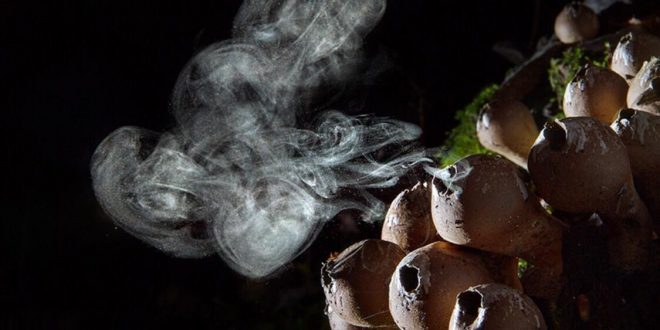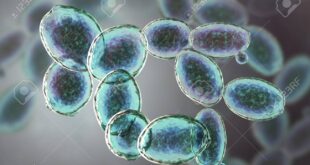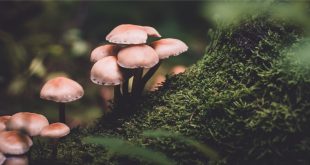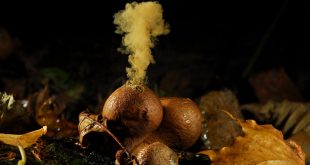The fungi comprising the phylum Basidiomycota commonly are known as basidiomycetes. It is a large phylum that includes forms commonly known as mushrooms, boletes, puffballs, earthstars, stinkhorns, birds-nest fungi, jelly fungi, bracket or shelf fungi, and rust and smut fungi.
Salient features
Habit and habitat
- Both parasite and saprophytic.
- Some of the groups are mycorrhizal.
Reproductive character
- Basidiomycetes are characterized primarily by producing their sexual spores, termed basidiospores (typically 4 in number), on the outside of a specialized, microscopic, spore producing structure called the basidium.
- Basidiospores are haploid but can be either uninucleate or multinucleate upon maturity.
- The basidiospores of most species are ballistospores meaning they are liberated with force.
- Basidiospores are exogenous in origin.
Best safe and secure cloud storage with password protection
Get Envato Elements, Prime Video, Hotstar and Netflix For Free
Best Money Earning Website 100$ Day
#1 Top ranking article submission website
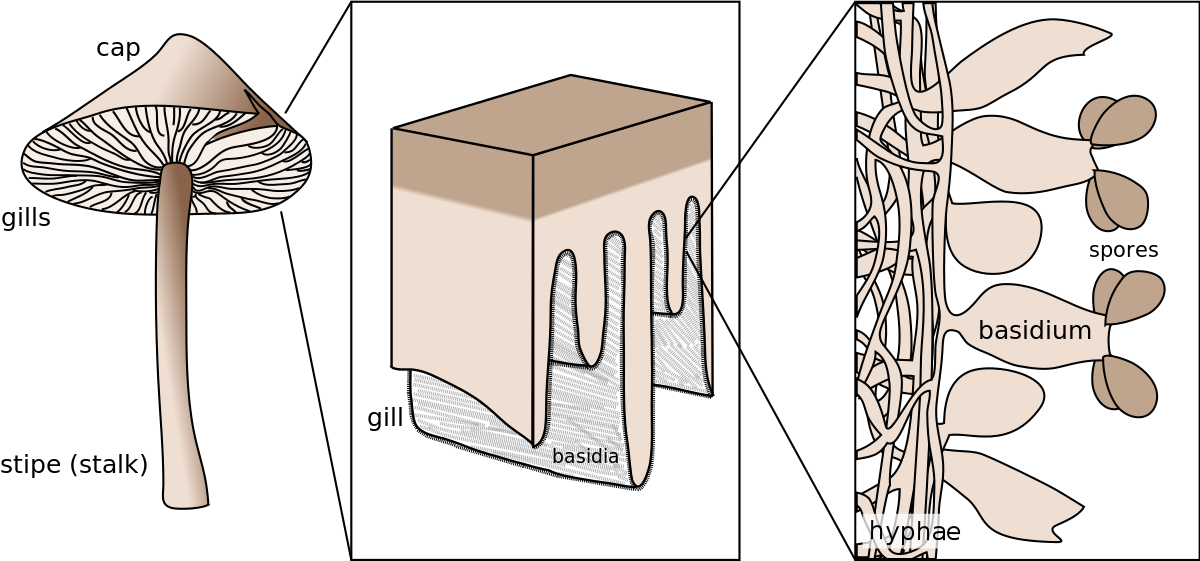
Differences between Ascomycetous fungi and Basidiomycetous fungi
| Ascomycetous fungi | Basidiomycetous fungi |
| Spores are borne internally. | Spores are borne externally. |
| Spores are borne in a sac called ascus (pl. asci) | Spores are borne at the end of a structure termed as basidium. |
| Usually contains 8 but sometimes 4 ascospores can be present. | Typically there are 4 spores per basidium. |
| Also called sac fungi as sac like struc. is present. | Also called club fungi as spores are borne at the end of basidium in the shape of club. |
| Dolipore septum absent. | Dolipore septum is present. |
| Drop any difference in the comment box that isn’t included here. | |
Vegetative structure
The mycelium of most basidiomycetes passes through three distinct stages of development: the primary, the secondary, and the tertiary – before the fungus completes its life cycle.
- Primary mycelia: Also known as homokaryon to emphasize the fact that all the nuclei are identical, usually develops upon the germination of a basidiospore.
- Secondary mycleia: Also called heterokaryon. Usually this type of mycelia is formed due to the fusion of two uninucleate cells of the compatible homokaryotic mycelia. So a binucleate cell is produced that develops later into secondary mycelia. Then, further divisions produce mycelia in which every cell is dikaryotic.
- Tertiary mycelia: The tertiary mycleia of basidiomycetes is represented by the organized, specialized tissues that comprise the basidiocarps (fruiting body)
Importance of Basidiomycetes
The basidiomycetes is an important group of fungi including harmful as well as many useful species. It has edible mushrooms in one side and poisonous mushrooms, smut fungi etc on other side.
Disease causing & destructive Basidiomycetes members
Rust and smut fungi are two groups of parasites causing plant diseases that destroy many millions of dollars worth of crops annually. Examples of such disease include:
- Stinking smut.
- Black stem rust of wheat by Puccinia graminis.
Many others attack a large variety of food and ornamental plants. Several others are responsible for damaging forest and shade trees. Example
- Armillaria species.
Many other basidiomycetes are directly responsible for the destruction of a wide variety of wood products including lumber, railroad ties, landscape timbers and utility poles. Some examples of wood rotting fungi which grow on old furniture are:
- Polyporus sp.
- Ganoderma sp.
- Lenzites sp.
- Hexagonia sp.
- Fomes sp.
Four common wood rotting polypore species found in Bangladesh.
| Species | Disease |
| Fomes badius | Spongy rot of Areca catechu |
| Fomes fustuosus | White pocket rot of Areca catechu |
| Irpex flavus | White spongy rot of Albizia chinesis. Tectona grandis |
| Polyporus shoreue | Root rot of Shorea robusta |
Others include
- Filobesidiella neoformanis is a serious human pathogen, particularly in case of AIDS patients.
Beneficial Basidiomycetes fungi
Basidiomycetes that attack dead woody plants are the principal agents that decay cellulose and lignin are the essential components of forest ecosystems. Some of these same organisms are used as biological pulping and bleaching agents in pulp and paper production and in the removal of toxic substances from the environment.
Other basidiomycetes are important as mycorrhizal species in forest ecosystems.
The cultivation of mushroom has developed all over the globe and is increasing exponentially. Some of the edible mushrooms commercially grown include:
- Agaricus brunnescens, also known as A. bisporus.
- Lentinula edodes (shiitake mushroom).
- Pleurotus spp. (oyster mushroom)
Basidiomycetes are well known for their production of a wide variety of interesting secondary products noted for their scents, tastes, colors and toxic properties. Even in the past, many mycologists have used odors of basidiocarps of some species as an aid to identification.
- Basidiomycete species known as ‘amydalina’ and ‘malodora’ are named for their almond or noxious odors.
- Globiformes graveolens is used in air freshener.
 Plantlet The Blogging Platform of Department of Botany, University of Dhaka
Plantlet The Blogging Platform of Department of Botany, University of Dhaka
